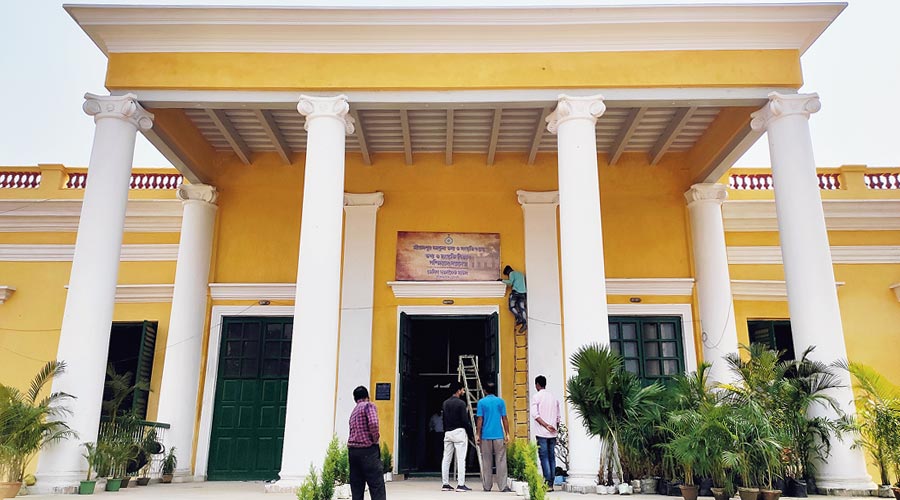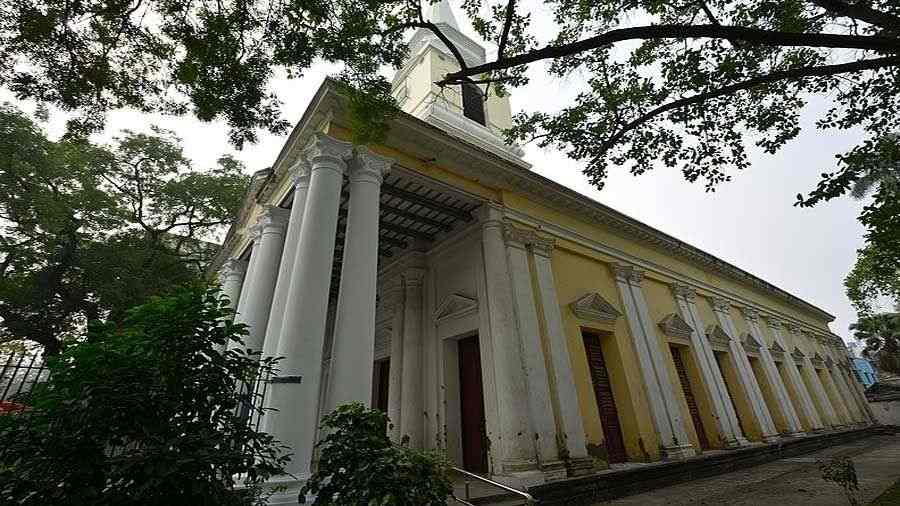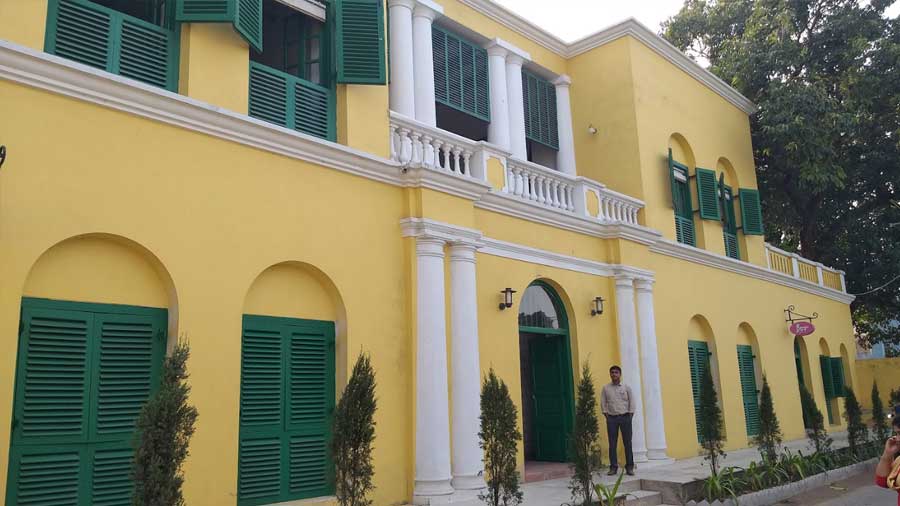The Serampore Initiative has come to an end with the inauguration of the freshly restored Old Government House within the Serampore Court complex on Friday.
The more than decade old journey of the Initiative, backed by the National Museum of Denmark, Realdania, a philanthropic organisation and Bente Wolff as project director, has come a full circle with the historical precincts of St Olav’s Church, the steeple of which can be seen from the Old Government House, the Red Building, the North and South Gates and not to forget the now popular Denmark Tavern, up and running.
When Wolff arrived in Serampore in 2008, she came here with historian Simon Rasten and restoration architect Flemmin Aauland to survey what was then the dilapidated remnants of the Danish settlement here.
All they had for reference was historical paintings and newspaper reports.
Wolff and her team started work on October 7, 2015 with a puja at the ruins of the tavern. They slowly renovated the North and South Gates that were in absolute ruins, redrew the tavern plan based on archival material while the state government took up the restoration of the Old Government House.
Slowly, they restructured the entire precincts and started restoration initially with Realdania pitching in with funds.
Later, the West Bengal Heritage Commission took over and became a partner in the restoration and the West Bengal Tourism Development Corporation took up the ownership and maintenance of the tavern.
The Old Government House was restored by the Commission with Aauland as consultant and architect Gopa Sen, the local expert.
Today, the Denmark Tavern, run by The Park, is the most popular joint with overbooked weekends.
The Red Building, a quaint side building on the court premises that used to be the British land registration office, now has an equally popular eatery called Vheto that serves Bengali cuisine like mochar chop and posto boda.
“Its quite popular with the local young people here,” said Wolff.
St Olav’s Church, now with the Church of North India (CNI), caters to the local congregation though Wolff feels “it is under utilised”.
The success of restored heritage lies in the adaptive reusage and the popularity of the tavern and the Red Building are living examples of such practice.
Likewise for the Old Government House, Wolff has plans: “It will house the Subdivisional Information and Cultural Office. We have also put up a permanent low maintenance exhibition on Serampore here. A room has been given to a local group, Serampore Heritage Restoration Initiative, and the southern halls could be rented out for government and private events while the lovely terrace could be another popular café.”
Talking about the interest in Serampore, Wolff said: “I see Serampore as part of global history. The Bhagirathi river was a world trade centre. The Europeans came here because they could trade and Bengal was a wealth in textiles, spice, saltpetre, jute fibre that could be used in shipping. As a result not just European traders but Bengali traders too flourished. And so we have here grand zamindar houses and European houses as well. Unfortunately, we could not take up the restoration of private houses.”
“A renovated heritage precinct is an asset of the town. It has a big influence on the surroundings. I am told ladies here feel safe to come to the riverfront at nine at night,” said Wolff.









